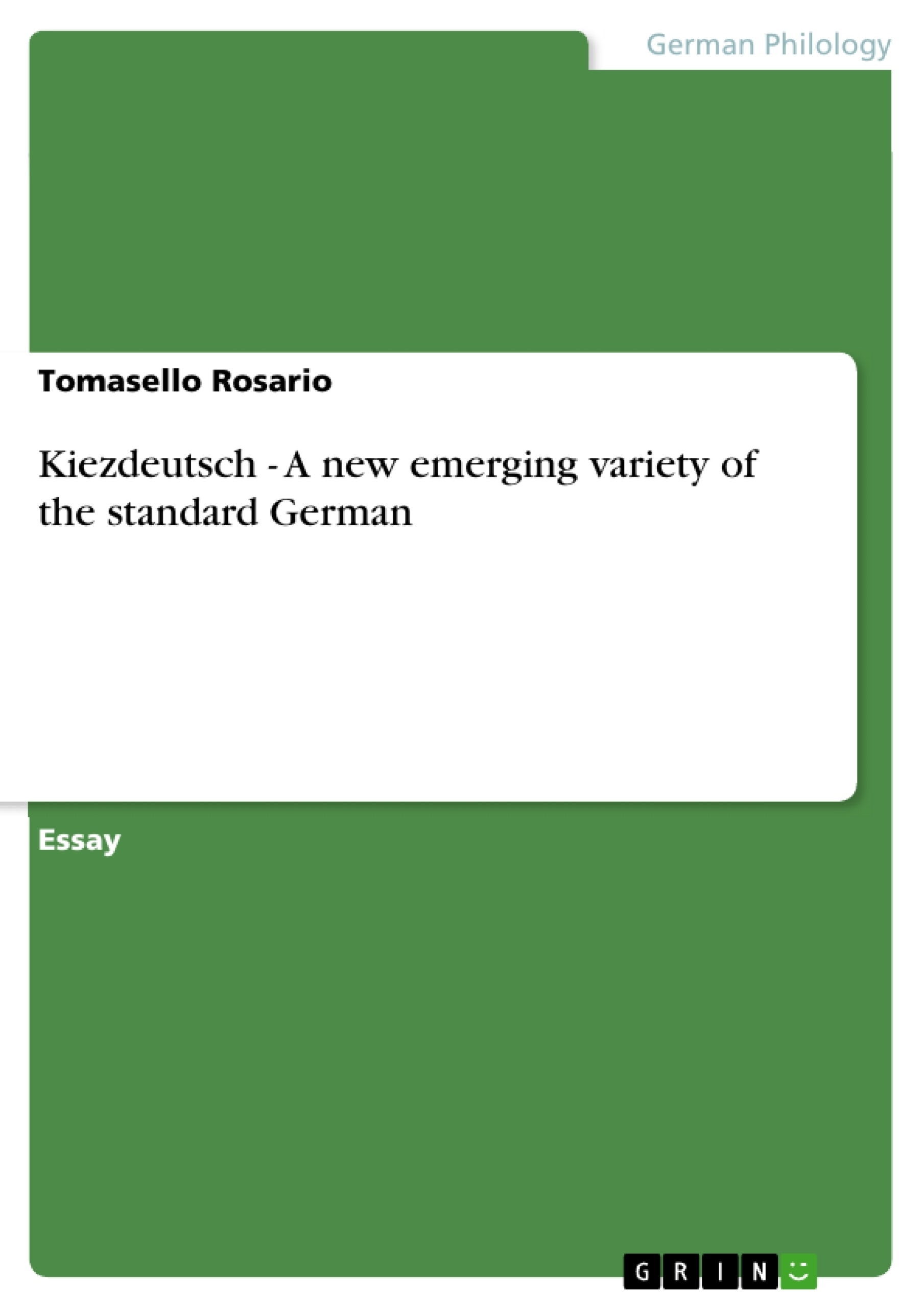Across Europe new types of linguistic varieties have emerged, mainly spoken by adolescents with foreign roots. The development of these varieties have been analysed and observed in recent decades, such as Rinkebysvenska in Sweden or Straattaal in the Netherlands. All these varieties display common characteristics, e.g. spoken by young people with different migratory backgrounds and a linguistic system developed by the contact language. (Paul, Freywald, Wittenberg 2009, 1-2)
A new emerging phenomenon, with similar proprieties of the other varieties in Europe is Kiezdeutsch – a multiethnolect variety spoken in urban cities across German speaking countries. (Wiese 2012, 110 – 114) In recent years in Germany there has existed a great debate about the status of Kiezdeutsch. Three different positions came out; if Kiezdeutsch could be defined, as a “dialect“ strongly affirmed by Wiese (2012), or as a “style of speaking” affirmed by Helmut Glück, professor of German at the University of Bamberg, or as an “incomplete language acquisition” defined by the public opinion.
In this essay I will focus on the sociolinguistic factors that played an important role for the birth of Kiezdeutsch, and describe this variety as a language of the youth, and on the linguistic system that combines features of contact language. I will research what makes Kiezdeutsch a dialect with a dynamic linguistic system, and how it is undervalued by the public opinion, which considers Kiezdeutsch not as a dialect, but rather a “broken German” or “an incomplete language acquisition”, acquired by immigrants.
Inhaltsverzeichnis (Table of Contents)
- Introduction
- Sociolinguistic factors in Kiezdeutsch
- Morpho-syntactic changes
- The omission of articles, pronouns and other words
- Word order in Kiezdeutsch
- Morpho-syntactic reduction: new particles
- Conclusion
Zielsetzung und Themenschwerpunkte (Objectives and Key Themes)
This essay aims to examine the sociolinguistic factors that contributed to the emergence of Kiezdeutsch, a variety of German spoken by young people in urban areas across German-speaking countries. It will explore the language's unique linguistic system, which combines features of contact language, and address how it is often undervalued by the public opinion, which sees it as a form of "broken German."
- The sociolinguistic factors contributing to the development of Kiezdeutsch
- The linguistic system of Kiezdeutsch as a contact language
- The perception of Kiezdeutsch in public opinion
- The dynamic nature of the Kiezdeutsch linguistic system
- The social and identity functions of Kiezdeutsch
Zusammenfassung der Kapitel (Chapter Summaries)
- Introduction: This chapter introduces the concept of Kiezdeutsch as a new emerging linguistic variety in Europe, drawing parallels with other similar varieties like Rinkebysvenska and Straattaal. It outlines the debate surrounding the status of Kiezdeutsch, highlighting different perspectives ranging from "dialect" to "style of speaking" to "incomplete language acquisition."
- Sociolinguistic factors in Kiezdeutsch: This chapter explores the sociolinguistic context of Kiezdeutsch, focusing on its origins in immigrant neighborhoods, the speakers' ethnic backgrounds, and the social context of its use. It addresses different terms used to describe Kiezdeutsch and their respective connotations, emphasizing the neutral term "Kiezdeutsch" and its connection to the "Kiez," a colloquial term for a neighborhood.
- Morpho-syntactic changes: This chapter delves into the linguistic system of Kiezdeutsch, highlighting its features as a contact language and its dynamic nature. It discusses the innovations in morpho-syntactic and semantic fields, including the omission of articles, changes in sentence structure, word fusion, and phonetic changes. It also introduces examples of grammatical innovations that distinguish Kiezdeutsch from standard German.
Schlüsselwörter (Keywords)
The central focus of this work is on Kiezdeutsch, a multiethnolect variety of German spoken primarily by adolescents in urban areas across German-speaking countries. Key themes include the sociolinguistic factors driving its emergence, its unique linguistic system, and its role as a marker of social identity and generational difference. The essay explores the influence of contact language on its linguistic system, analyzing innovations in morphology, syntax, and semantics. Additionally, it considers the perception of Kiezdeutsch in public opinion, addressing the negative connotations often associated with it and highlighting the ongoing debate regarding its status as a dialect or a form of "broken German." The research draws upon studies on other similar varieties, highlighting shared characteristics and contributing to a broader understanding of youth language development in multicultural contexts.
- Citar trabajo
- Tomasello Rosario (Autor), 2013, Kiezdeutsch - A new emerging variety of the standard German, Múnich, GRIN Verlag, https://www.grin.com/document/211881



